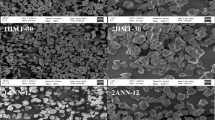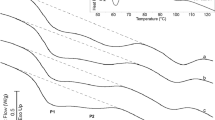Abstract
α-Amylases, usually added to bread recipes as anti-firming agents, are known to produce low molecular weight dextrins by starch hydrolysis. The influence of these compounds on the gelatinization and retrogradation of starch was studied by differential scanning calorimetry. Adding oligosaccharides to starch caused a delay in gelatinization, although its extent was not quantified. However, oligosaccharides of degrees of polymerization (DP) 3–5 reduced the enthalpy of the retrogradation endotherm, shown as the staling endotherm. The addition of gluten to starch and starch/oligosaccharide mixtures had no effect on the gelatinization and retrogradation of starch. The retrogradation of starch in dough samples was also analysed, after 'baking' in the calorimeter, to obtain additional information about starch retrogradation during storage. Oligosaccharides of DP 3–5 also reduced the enthalpy of the retrogradation endotherm. This work provides evidence that oligosaccharides influence starch changes during the baking and storage of bread. These effects could be considered as the mechanism by which the bacterial α-amylase reduces starch retrogradation and acts as an anti-firming agent.
Similar content being viewed by others

Author information
Authors and Affiliations
Additional information
Received: 13 December 1999 / Revised version: 10 April 2000
Rights and permissions
About this article
Cite this article
Durán, E., León, A., Barber, B. et al. Effect of low molecular weight dextrins on gelatinization and retrogradation of starch. Eur Food Res Technol 212, 203–207 (2001). https://doi.org/10.1007/s002170000205
Issue Date:
DOI: https://doi.org/10.1007/s002170000205



